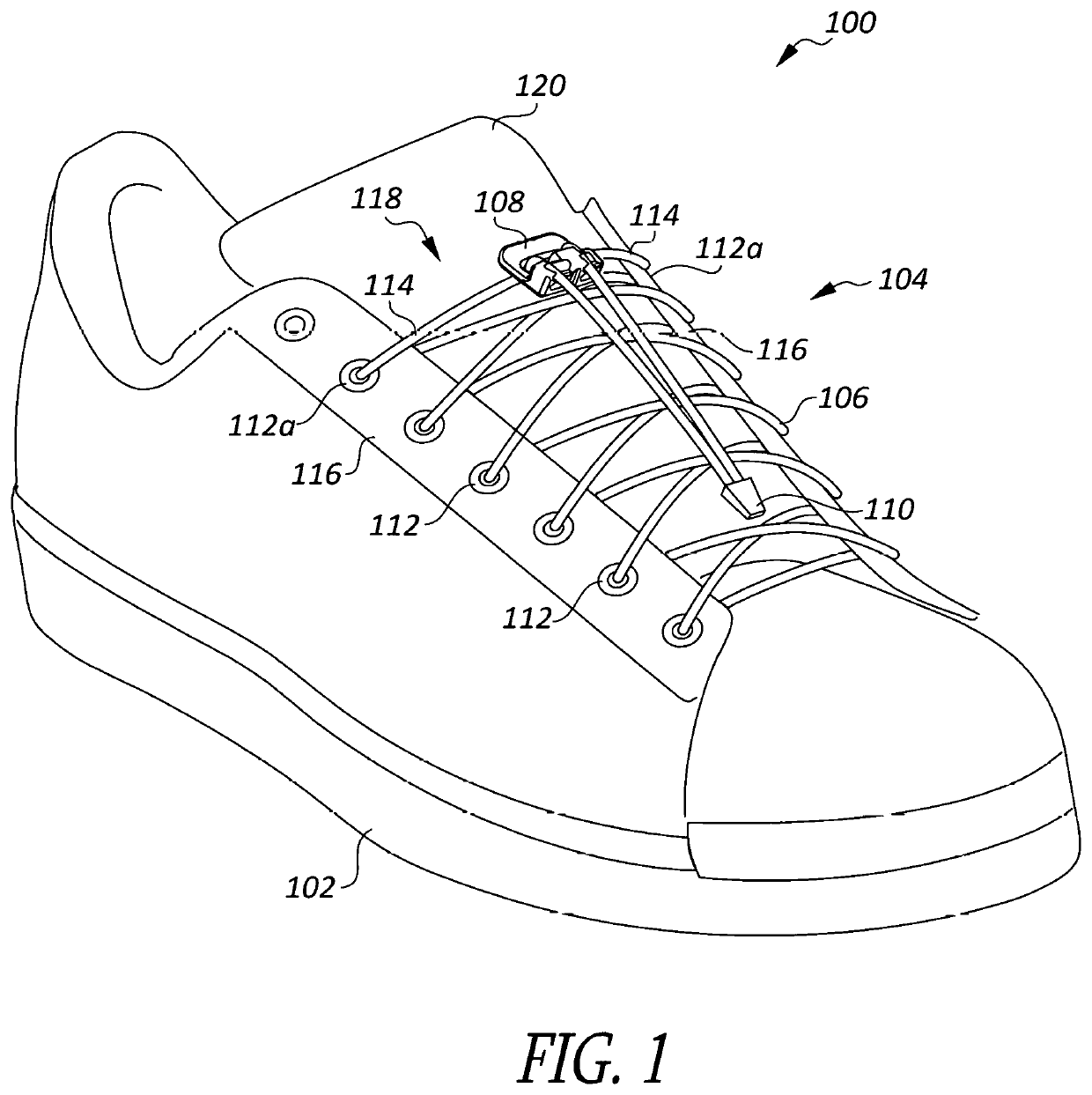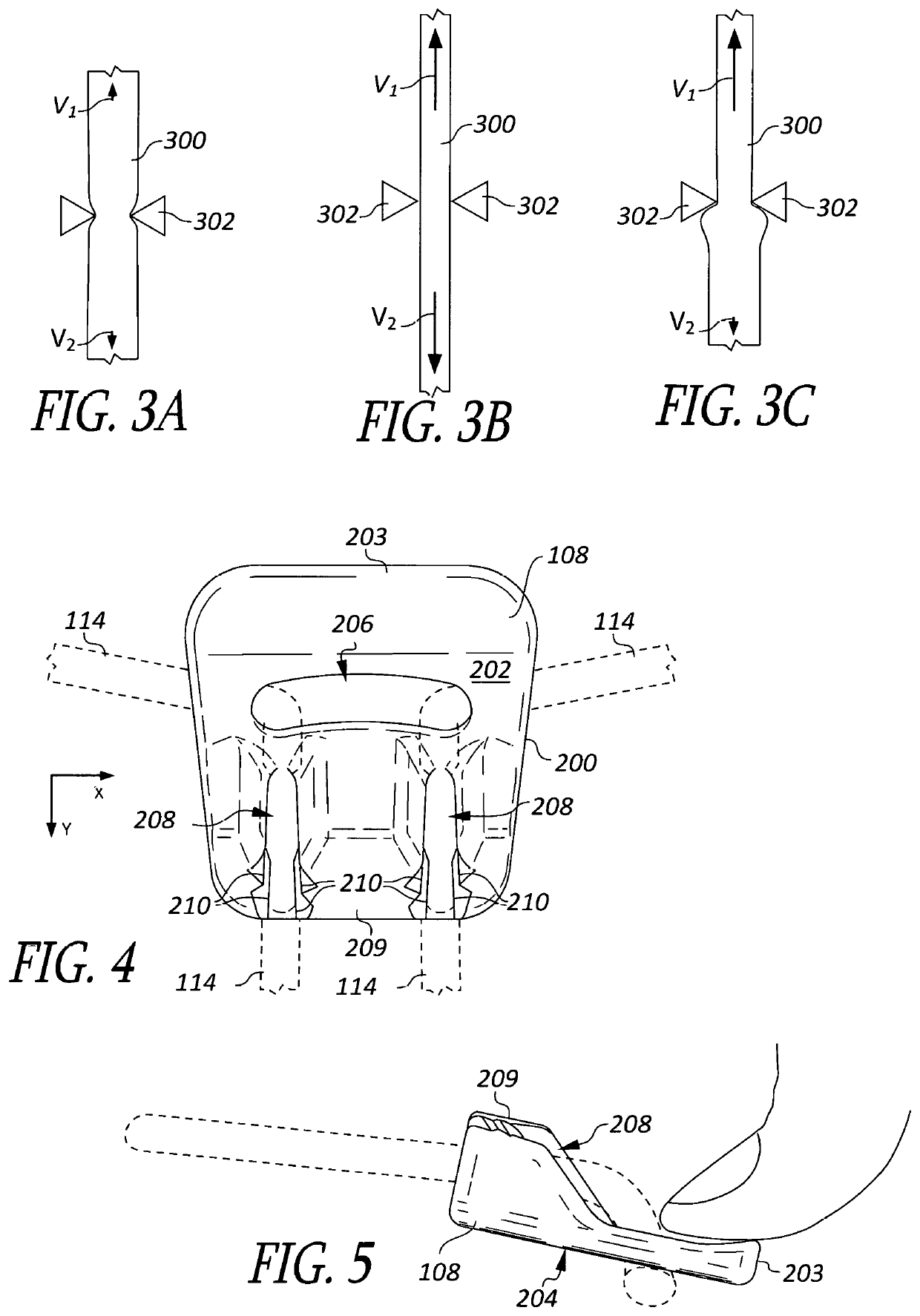Shoe lace lock and system and method for lacing shoes
a shoelace and lock technology, applied in the field of shoelaces, can solve the problems of tying a knot in the shoelace, affecting the lacing effect, and causing the tying knot to be frustrating or even impossible, and the task can be much more difficul
- Summary
- Abstract
- Description
- Claims
- Application Information
AI Technical Summary
Benefits of technology
Problems solved by technology
Method used
Image
Examples
Embodiment Construction
[0028]In the following detailed description, reference is made to the accompanying drawings, which form a part hereof. In the drawings, similar reference characters typically identify similar components, unless context dictates otherwise. Other embodiments may be used and / or other changes may be made without departing from the spirit or scope of the disclosure. For ease of understanding, the terms “forward,”“front,”“rearward,”“back” and the like, as used in this description, refer respectively to the directions or relative locations proximal (towards) and distal (away) from the perspective of a user wearing a shoe or other article of footwear (i.e., the forward end is towards the ankle and the rearward end is towards the toes); similarly the terms “upper,”“top” and “lower,”“bottom” refer to the dorsal and plantar directions from the perspective of such a user.
[0029]FIG. 1 is a perspective view of a shoe assembly 100, according to an embodiment, which includes a shoe 102 and a lacing...
PUM
 Login to View More
Login to View More Abstract
Description
Claims
Application Information
 Login to View More
Login to View More - R&D
- Intellectual Property
- Life Sciences
- Materials
- Tech Scout
- Unparalleled Data Quality
- Higher Quality Content
- 60% Fewer Hallucinations
Browse by: Latest US Patents, China's latest patents, Technical Efficacy Thesaurus, Application Domain, Technology Topic, Popular Technical Reports.
© 2025 PatSnap. All rights reserved.Legal|Privacy policy|Modern Slavery Act Transparency Statement|Sitemap|About US| Contact US: help@patsnap.com



